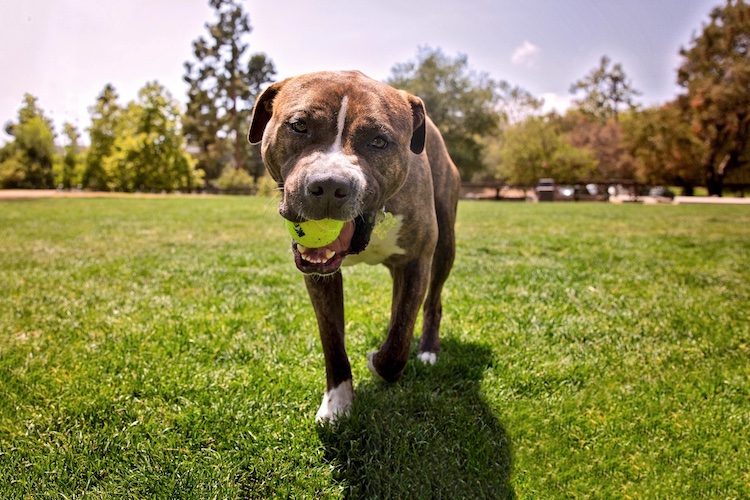- Home
- The Tips & Tricks
- The Heat Is On: How to Keep Pets Cool During Heatwaves

The Heat Is On: How to Keep Pets Cool During Heatwaves
Summer is in full swing, and with that, temperatures across the country are reaching alarmingly high levels. 
It’s hard to beat the heat even with easy access to air conditioning, icy drinks and refreshing swimming pools. And it can be just as hard for dogs and cats on these sweltering days.
To help pet owners keep their pets cool despite the rising temperatures, Best Friends Animal Society, a leading animal welfare organization working to end the killing of cats and dogs in America’s shelters by 2025, is offering the below tips:
- Exercise dogs during the cooler morning or evening hours, not in the intense afternoon heat.
- Keep pets indoors during the hottest parts of the day. Quick walks and bathroom breaks are fine in extreme heat but try to keep pets in the shade.
- Be aware of the temperature of the sidewalk, asphalt, sand, or even packed dirt as these can cause burns to your pet’s paw pads if they are too hot.
- If pets do spend time outside during the day, ensure that they have access to shade at all hours of the day. Dogs on tethers are especially vulnerable because they could become tangled out of reach of shade or water.
- Provide pets with fresh, cool water at all times as most dogs won’t drink hot water no matter how thirsty they are.
- Dogs who are older or overweight, have a thick coat or a pushed-in nose are especially at risk of overheating.
- Dogs with bald patches or minimal coats may need sunscreen. Consult a veterinarian.
Never leave your pet in a parked car when the outside temperature is above 70 degrees.
Many studies show that the temperature inside a car on a 70 –degree day can rise to 89 degrees in ten minutes, and to 104 degrees in as little as a half hour. Dogs and cats can’t sweat like humans, so they pant to lower their body temperature. If they’re inside a car, recycling hot air, panting gives no relief, and heat stroke can occur quickly.
“Heat stroke can occur when an animal’s temperature rises to a critical level,” says Dr. Erin Katribe, Medical Director, Best Friends Animal Society. “Normal body temperatures for dogs and cats range from 100 to 102.5 degrees. When a dog’s temperature rises to 108 degrees, or to 106 degrees for a cat, they can suffer irreparable organ damage, or worse.”
According to Dr. Katribe, signs of heat stroke include heavy panting that does not resolve as the pet rests, increasing distress, a tongue color that is dark red to almost purple, weakness or collapse, hyper-salivation, vomiting and labored breathing.
If you suspect a dog or cat is suffering from heat stroke move him to a cooler environment immediately and apply cool water to the abdomen, ears, and footpads. Once they are stable, bring them to a veterinary clinic as quickly as possible. Katribe warns, things may be happening internally that are not obvious from the outside.
